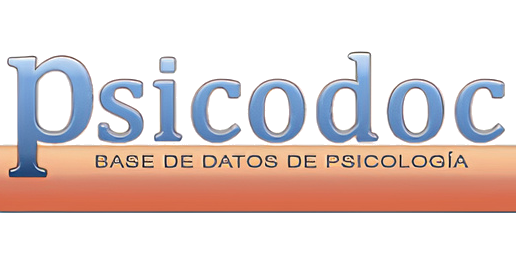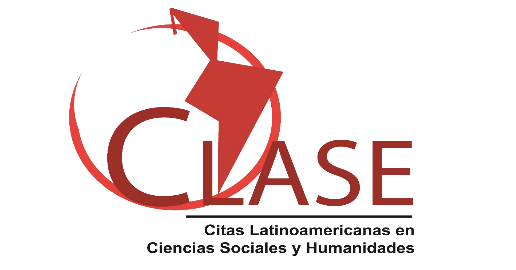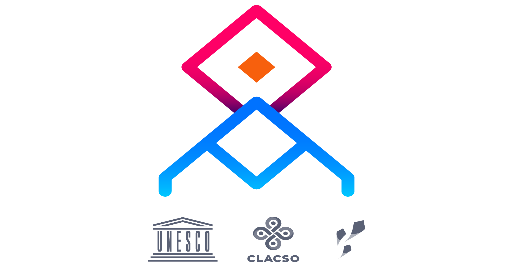Los autores que publiquen en esta Revista aceptan las siguientes condiciones:
Acta Colombiana de Psicología se guía por las normas internacionales sobre propiedad intelectual y derechos de autor, y de manera particular el artículo 58 de la Constitución Política de Colombia, la Ley 23 de 1982 y el Acuerdo 172 del 30 de Septiembre de 2010 (Reglamento de propiedad intelectual de la Universidad Católica de Colombia)
Los autores conservan los derechos de autor y ceden a la Revista el derecho de la primera publicación, con el trabajo registrado con la Este obra está bajo una licencia de Creative Commons Reconocimiento-NoComercial-CompartirIgual 4.0 Internacional, que permite a terceros utilizar lo publicado siempre que mencionen la autoría del trabajo y a la primera publicación en esta Revista.
Resumen
El objetivo del siguiente estudio fue examinar las relaciones entre identidad étnica y autoestima en indígenas y mestizos de Chiapas. Para ello se aplicó a 517 estudiantes universitarios (256 mestizos y 261 indígenas) una versión española de la Escala de Identidad Étnica Multigrupo Revisada (EIEM-R) y un cuestionario de autoestima. Siguiendo la línea de estudios previos se esperaba que la identidad étnica fuera mayor en el grupo minoritario (indígenas en nuestro caso), y que tuviera una correlación positiva con medidas de autoestima por parte de los indígenas. Los resultados dan apoyo empírico a ambas hipótesis en una población poco estudiada hasta el momento. Los indígenas obtienen puntuaciones superiores, estadísticamente significativas, en identidad étnica y en los factores de exploración e identificación, en comparación con los mestizos. Además, la identidad étnica y la autoestima correlacionan positivamente en el caso de los indígenas y no en el caso de los mestizos. Se discuten los resultados a la luz de la teoría de la identidad social.

Citas
Altschul, I., Oyserman, D. y Bybee, D. (2006). Racial–ethnic identity in mid-adolescence: Content and change as predictors of academic achievement. Child Development, 77, 1155-1169.
American Psychological Association (2002). Ethical principles of psychologists and code of conduct. Consultado el 03/09/09 en http://www.apa.org/ethics/code2002.pdf
Bauman, Z. (2000). Community: Seeking safety in an insecure world. Cambridge: Polity Press.
Berry, J. W., Phinney, J. S., Sam, D. L. y Vedder, P. (Ed.) (2006). Inmigrant Youth in Cultural Translation. Acculturation, Identity, and Adaptation Across National Contexts. Mahwah, NJ: Lawrence Erlbaum Associates, Publishers.
Castells, M. (1997). The Information Age: Economy, society, and culture. Vol. II The power of identity. Oxford & Cambridge: Blackwell Publishers.
Dandy, J., Durkin, K., McEvoy, P., Barber, B. L. y Houghton, S. (2008). Psychometric properties of multigroup ethnic identity measure (MEIM) scores with Australian adolescents from diverse ethnocultural groups. Journal of Adolescence. 31, 323-335.
Esteban, M. (2010). Propiedades psicométricas y estructura factorial de la Escala de Identidad Étnica Multigrupo en español (MEIM). Revista Latinoamericana de Psicología, 42, 15-21.
Esteban, M. (2011). Ethnic identity in an intercultural geography. An empirical study. Canadian Social Science, 7, 64-71.
Esteban, M., Nadal, J. M. y Vila, I. (2010). Ethnic identity among indigenous and mestizos form Intercultural University of Chiapas. Psychological Writings, 3, 15-21.
INEGI (2010). Sondeo de Población y Vivienda. Disponible online: http://www.inegi.org.mx/ (consultado el 03 de enero de 2011).
Lozano, A. M. y Etxebarria, I. (2007). La tolerancia a la diversidad en los adolescentes y su relación con la autoestima, la empatía y el concepto del ser humano. Infancia y Aprendizaje, 30, 109-130.
Martín Albo, J., Núñez, J.L., Navarro, J. G. y Grijalvo, F. (2007). The Rosenberg Self-Esteem Scale: Translation and Validation in University Students. The Spanish Journal of Psychology, 10, 458-467.
Mestre, V. Frías, M. D. y Samper, P. (2004). La medida de la empatía: análisis del Interpersonal Reactivity Index. Psicothema, 16, 255-260.
Pegg, P. O. y Plybon, L. E. (2005). Toward the theoretical measurement of ethnic identity. Journal of Early Adolescence, 25, 250-264.
Phinney, J. S. (1990). Ethnic identity in adolescents and adults: review of research. Psychological Bulletin, 108, 193-208.
Phinney, J. S. (1992). The Multigroup Ethnic Identity Measure: A new scale for use with adolescents and youth adults from diverse groups. Journal of Adolescent Research, 7, 156-176.
Phinney, J. S. y Alipuria, L. (1990). Ethnic identity in college students from tour ethnic groups. Journal of Adolescente, 13, 171-184.
Phinney, J. S. y Ong, A. D. (2007). Conceptualization and measurement of ethnic identity: Current status and future directions. Journal of Counseling Psychology, 54, 271-281.
Phinney, J. S., Jacoby, B. y Silva, C. (2007). Positive intergroup attitudes: The role of ethnic identity. International Journal of Behavioral Development, 31, 478-490.
Portes, A. (2001). The debates and significance of immigrant transnationalism. Global networks, 1, 181-193.
Roberts, R. E., Phinney, J. S., Masse, L. C., Chen, R., Roberts, C. R. y Romero, A. (1999). The structure of ethnic identity of young adolescents from diverse ethnocultural groups. Journal of Early Adolescente, 19, 301-322.
Rosenberg, M. (1965). Society and the adolescent self image. Princeton, NJ: Princeton University Press.
Rosenberg, M. (1989). Society and the adolescent self-image (Rev. Ed.). Middeltown, CT: Wesleyan University Press.
Rotherham-Borus, M. J. (1994). Bicultural referente group orientations and adjustment. En M. Bernal y G. Knight (eds.), Ethnic identity (pp. 73-128). Albano, NY: State University of New York Press.
Sabatier, C. (2008). Ethnic and national identity among secondgeneration immigrant adolescents in France: The role of social context and family. Journal of Adolescence, 31, 185-205.
Smith, V. (2002). La Escala de Identidad Étnica Multigrupo (EIEM) en el contexto costarricense. Actualidades en Psicología, 18, 47-67.
Suárez-Orozco, C. y Suárez-Orozco, M. (2003). La infancia de la inmigración. Madrid: Morata.
Suárez-Orozco, C., Suárez-Orozco, M. y Todorova, I. (2008). Learning a new land: Immigrant students in American society. Cambridge, Mass.: Harvard University Press.
Spencer, M. B. y Markstrom-Adams, C. (1990). Identity processes among racial and ethnic-minority children in America. Child Development, 61, 290-310.
Tajfel, H. (1981). Human groups and social categories. New York: Cambridge University Press.
Taylor, C. (1992). Multiculturalism and the politics of recognition. Princeton: Princeton University Press.
Umaña-Taylor, A. J. (2004). Ethnic identity and self-esteem: Examining the role of social context. Journal of Adolescence, 27, 139-146.
Umaña-Taylor, A. J. y Updegraff, K. A. (2007). Latino adolescents’ mental health: Exploring the interrelations among discrimination, ethnic identity, cultural orientation, selfesteem, and depressive symptoms. Journal of Adolescence, 30, 549-567.
Vertovec, S. (2001). Transnationalism and identity. Journal of Ethnic and Migration Studies, 27, 573-582.
Wangaruro, J. (2011). “I have two homes”. An investigation into the transnational identity of Kenyan migrants in the United Kingdom (UK) and how this relates to their wellbeing. School of Health and Social Sciences: Middlesex University (Tesis doctoral inédita).





























